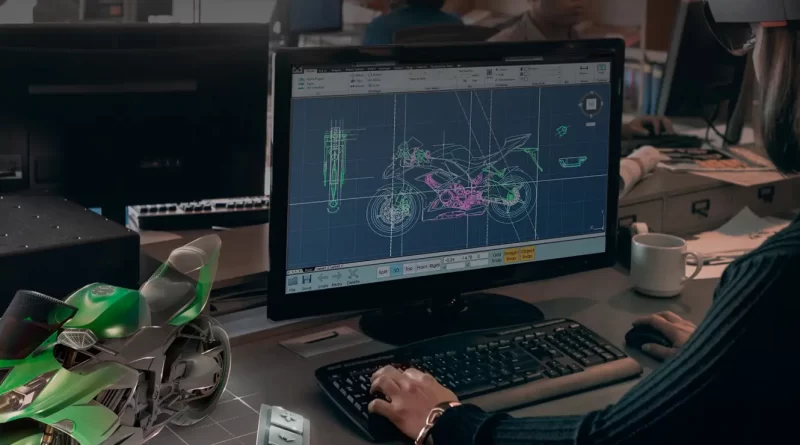Crafting Realities: A Guide to Augmented Reality Development
Augmented reality (AR) has witnessed a surge in popularity, with notable applications slike Pokémon Go achieving significant market success. The AR solutions market reached a value of USD 42.20 billion in 2022 and is expected to grow to USD 1,109.71 billion by 2030, exhibiting a CAGR of 50.7% during the forecast period.
For those interested in entering the augmented reality development landscape, this comprehensive guide covers the entire process. Here’s a glimpse of what’s covered:
Key Types of Augmented Reality Apps
Augmented reality app development encompasses various forms based on the specific business objectives of your application. Let’s explore the primary types of AR solutions:
● Marker-based Augmented Reality
● Location-based Augmented Reality
● Projection Augmented Reality
● Superimposition-based Augmented Reality
1. Marker-Based Augmented Reality:
This AR application type relies on image recognition or image markers. When the application identifies a recognizable image or object, it overlays digital information onto the marker. Solutions can use 3D or non-3D objects, such as QR codes, as markers.
2. Location-Based Augmented Reality:
Also known as marker-less AR, these solutions are widely utilized in augmented reality. Instead of relying on markers, these apps utilize GPS, accelerators, compasses, and other location detectors to generate AR objects based on the current geographical location. A notable example is Pokémon Go.
3. Projection Augmented Reality:
Applications in this category depend on visual odometry, utilizing intricate algorithms and data from multiple sensors to pinpoint objects’ precise locations and execute corresponding actions. Projection AR finds application in scenarios like car parking systems, where it can reveal hidden objects through built-in cameras.
Besides, architects and engineers also leverage this augmented reality development to analyze environments for construction placement.
Superimposition-Based Augmented Reality:
Applications employing superimposition are prevalent in healthcare and medicine. The technology involves processing and recognizing a real image of the environment, upon which an AR object is overlaid. This category is self-explanatory, providing practical applications in medical settings.
Related post: Elevate Skills and Performance with Immersive Learning Experiences
Step-by-Step Guide for Augmented Reality Mobile App Development
Embarking on the journey of creating an augmented reality app involves a detailed understanding of each stage. Let’s delve into the intricacies:
● Finding a Niche and Unique Selling Proposition (USP)
The first and foremost step in augmented reality app development requires envisioning your product’s future.
This involves understanding your competition, market dynamics, and identifying niches with potential. Key actions include market research to understand local preferences, analyzing competitors’ strengths and weaknesses, conducting a comprehensive study of the target audience, and creating a Unique Selling Proposition (USP) based on collected data.
● Business Plan Creation and Choosing a Partner
After establishing a unique vision, crafting a comprehensive business plan is crucial. This involves choosing the right monetization model. Consider subscription-based models with options like monthly, quarterly, or yearly payments, exploring advertising opportunities within the app, or adopting a freemium approach, allowing free access to certain features with additional payments for full functionality.
Furthermore, collaborating with a reliable virtual reality company is pivotal for the app’s success. Follow these steps to choose the trusted and experienced technology partner.
● Use trusted B2B platforms like Clutch and The Manifest to find reputable augmented reality app development services.
● Prioritize experience and professionalism over cost.
● Ask for client testimonials and shortlist potential companies.
● Analyze vendors, comparing their expertise and location.
● Conduct interviews with shortlisted companies to make an informed decision on your technical partner.
● Choosing App Functionality
In collaboration with your augmented reality development partner, determine the app’s functionality aligning with your business requirements. Beyond selecting Software Development Kits (SDKs) and platforms, consider implementing additional features based on requirements.
● UX/UI Design
Design creation is integral to the augmented reality app development process. Work closely with designers to craft user flows, establish branding, and define a unique style for your application. Emphasize originality, avoiding copycat solutions to enhance the app’s chances of success.
● Augmented Reality App Development
The central phase involves developing the app’s front-end and back-end elements based on the established design materials. Thorough testing of each implemented feature and technical solution is imperative to ensure optimal app performance, scalability, and reliability.
Finally…
Explore the exhilarating realm of Augmented Reality (AR) development with our ultimate guide! From unveiling the diverse types of AR apps to unraveling the mysteries of essential tools and SDKs, hopefully this blog would navigate you through the thrilling steps of crafting your AR masterpiece.
Debunk the exciting possibilities, uncover industry insights, and gather expert tips for a seamless AR development experience. Join us on this immersive adventure and dive into the captivating world of augmented experiences!

